Welcome back to Sound & Vision, the Rumpus profile series that spotlights the creative talents of those working behind the scenes in the music industry. What a treat it was this month to talk with Mark Alan Stamaty, whose work I’ve long admired! Stamaty is a Society of Illustrators four-time medalist, and the author-illustrator of ten books, including Who Needs Donuts? (1973, 2003), Alia’s Mission (2005), and Shake, Rattle & Turn that Noise Down!: How Elvis Shook Up Music, Me and Mom (2010).
He is also widely known for his incredible work as a cultural and political cartoonist. Stamaty’s panoramic centerfold cartoons of Greenwich Village and Times Square, which appeared in the Village Voice in 1977 and 1978, were reproduced as iconic posters and led to a series of comic strips for the Voice, including MacDoodle St., which was later published as a comic strip novel. In 1981, Stamaty was tapped by the Washington Post to create the comic strip Washingtoon for the op-ed page, which was subsequently picked up by more than forty papers. He was the political cartoonist for TIME magazine from 1994–1996, and from 2001–2003 he wrote the monthly comic strip Boox for the New York Times Book Review. Beyond recurring strips, Stamaty has also created covers for the New Yorker, The New Republic, and many others. His music-related New York street scenes have graced the cover of Will Hermes’s book Love Goes to Buildings on Fire, and most recently, the walls of the new Sonos store on Greene Street in New York City, where we had a chance to discuss his life and work.
***
The Rumpus: Your creative work has long been connected to music. When and how did that first come together for you?
Mark Alan Stamaty: Both of my parents were cartoonists—they met in art school—so I was always drawing and I was the best artist in my class and all that stuff. When I was in fourth grade we had a teacher who would have us write short stories, and I got a feeling of excitement when I wrote my first. Everybody liked it, and a bunch of kids even wanted copies of it, so my mother made them carbon copies. The other big thing that happened to me around this time was that in early 50s music on the radio was like Patti Page and all this stuff about turtledoves and whatever, and then all of a sudden Elvis came along and that really grabbed me. I wrote the book Shake, Rattle & Turn that Noise Down!, about discovering Elvis while listening to a radio that my parents had bought me for my birthday.
Rumpus: I understand that you even enjoyed an early career as an Elvis impersonator.
Stamaty: Oh yeah! I had a tennis racket and I’d practice in my bedroom in front of my mirror. I was in the cub scouts and every year they had the blue and gold dinner where every den had to perform a skit. Mrs. Cavanaugh, our den mother, encouraged me to lip sync to Elvis and it got a great reaction, so I also got to perform it for my grade school class. Years later, in New York, the cartoonist Bill Plympton had a small apartment where he would give these great parties, filled with illustrators, artists, cartoonists, and writers. There were some mics and guitars in a back room and one time I asked if anyone knew any Elvis. They did and we started jamming. At the time if you worked in pen and ink, and you wanted a halftone shade, you would draw a regular line drawing and use this stuff, like clear acetate with dots on it. One of the brands was called “Zip-A-Tone” and the other was called “Ben-Day.” So another illustrator, Lou Brooks, came up with a great name for our band: Ben Day and the Zip-A-Tones. We got shows for private parties at places including the Limelight and Irving Plaza.
Rumpus: Were your parents as encouraging about your early interest in music as they’d been about drawing and writing?
Stamaty: My parents were into 40s big band stuff, and my father was a great dancer to that kind of thing. But rock ‘n’ roll? No. I wanted a guitar, but my mother didn’t really want me to have one. At some point I played a violin, but I didn’t last long at that. For my parents, and my dad in particular, it was all about Frank Sinatra and Tony Bennett—who at the time I thought was a total cornball. It wasn’t until I was in my thirties, and I was driving around New England one night, flipping through stations when I stumbled on an all-Sinatra night, that I finally got it. Then I got into Tony Bennett, and went to see him live a few times. But back then I was way more into Elvis.
Rumpus: Were you also swept up in Beatlemania?
Stamaty: No! I didn’t get the Beatles at all. I thought they were boring! In fact friends of my parents from art school had a daughter who was a big fan and one of her uncles was in show business and somehow got her tickets to see them at Shea Stadium. She was too young to go on her own so they asked me to take her. We sat in the reserve seats and they were on second base and this is what we heard: “EEEEE!!!!”And she was listening very carefully to try to figure out what songs they were singing and I’d try to write them down, but you couldn’t hear a thing. After Elvis it was doo-wop and soul for me, and people like Al Green, Smokey Robinson, Otis Redding, and James Brown—who’s still one of my all-time favorites. Years later, I also came to love the Beatles (and still do now).
Rumpus: I know that you went to Cooper Union for college, and then started doing work depicting New York street life for the Village Voice. But how did you get into political cartooning?
Stamaty: I’d been doing the MacDoodle strip for the Village Voice for a few years and in 1981 I got this call from Meg Greenfield, the editorial page editor from the Washington Post, and she said, “I want you to do a MacDoodle St. version of Washington.” To prepare for that project I spent a lot of time on Capitol Hill, maybe seven months before I started. I wanted to be there and feel it, so I went to tons of Congressional hearings, etc. You know, it was going to be a weekly strip in front of the most sophisticated political audience, which was in some ways foreign to me. Though both projects were weekly strips, this was really different than doing MacDoodle St., where I lived in the Village, actually on MacDougal Street itself. In the beginning I was way more careful, even reticent about taking positions. I made fun of things, but I think I was scared in some way. But eventually, I was like, “Fuck it! They’re not going to shoot me!” I became more comfortable with being who I was and doing what I was doing.
Rumpus: Was there a strong cartooning community in DC?
Stamaty: There was a guy there named Howard Simons, who was the managing editor at the Post. He loved cartooning and even made his own little cartoons. He hosted a small annual dinner party at the Post attended by about a dozen cartoonists and their wives or dates along with writers and political luminaries such as Walter Mondale and Ted Kennedy. The tradition was that we’d all eat dinner, then tell stories. I didn’t have any stories, but I mentioned my Elvis routine and I got to perform.
Rumpus: And that led to a White House gig, right?
Stamaty: Yes, one of my friends was also connected to Al Gore, who was a big fan of Washingtoon as it turned out. I’d seen Gore in Congressional hearings, where he could come across as an arrogant guy, but in person he was a sweetheart, just a wonderful, funny guy who could see the irony in everything! I got to know him through the years, and in 1992, he and Tipper were invited to the Post party where he heard my Elvis. A year later, we got an invitation to the Oval Office—during a blizzard that pretty much shut down the city—and at some point Al Gore came into the room and said, “In his lifetime, Elvis only visited the White House once…”
Rumpus: Oh right! Wasn’t he there to meet Nixon?
Stamaty: Yes! Apparently Elvis would be up all night, and one day he decided to drive up to the White House and ask to see the President. And Nixon let him in! He told Nixon he wanted to fight drugs, and Nixon gave him a badge. That’s a silly kind of thing, but a fun fact. Gore, referring to Elvis’s visit, continued, “but he’s here among us today.” That was my cue—I got and performed “All Shook Up.”
Rumpus: That’s amazing! Why did you step away from Washingtoon?
Stamaty: Just before that strip was about to begin, I heard Ray Bradbury on Dick Cavett talking about his inspirations. And he said he would go to the library and pull random books off the shelves, and from that he would make creative “mulch.” With Washingtoon, I realized that if I were to survive, I had to meet deadlines, and so all during the week I tried to fill myself with as much “mulch” as I could and then I’d run into the do or die moment where I just had to come up with something to save my ass. You know it’s kind of like performing, where there’s this certain energy that kicks in when you hit the stage. With the deadline, there’s an intensity like that, but you can freak yourself out when you think that whatever you put on the page is going to be in front of three million people. [Laughs] You can take all of the half-formed ideas you came up with during the week and try to make the best lemonade. I relied on that a lot, and tried to take the strip to places others hadn’t gone, but when you’re doing a weekly you can never get to page forty and go back and redo something that happened on page ten. After a while it became take in stuff, get mad, and nail things, which over time was less fun for me.
Rumpus: Do you prefer working on longer, more self-contained projects?
Stamaty: I like to follow my own muse. When I came to the city for college at Cooper Union, we had a teacher, Ben Cunningham, who called himself a “visual voluptuary.” I took that to heart. I’d go for long walks, often late at night, where I took in a visual catalog, a repertoire. I illustrated a book called Yellow Yellow for my friend Frank Asch when I was in art school, making it a detailed cityscape. After that I knew I wanted to do my own book.
Rumpus: Did you know right away what you wanted to write about?
Stamaty: I wrote some bad stuff for a while, and then one day I was in my apartment thinking about what I care about. A few years before that, I used to go to this all-night coffee shop called Bickford’s that had these counters and all these crazy people would come in and I’d make sketches of them. One night when I was in there, this old woman was like half asleep on the counter when this guy comes in, dressed in a suit and tie, and he said he’d like two cups of coffee to go. And the waitress asks if he wants donuts with that, and he says no. And the old lady looks up, and kind of points at the ceiling, and says, “That’s right. Who needs donuts when you’ve got love?” I went home and wrote this on a sign which I kept in my room at the boarding house where I’d been living, and then later in my apartment on MacDougal. People would see it and say, “Oh, that’s funny!” I thought maybe I could write a book around that. Who Needs Donuts? starts out in the parody version of suburbs where I came from and follows this kid who wants donuts to the city. When I got him there, I had the chance to do all of these scenes of New York, capturing the energy I had experienced there.
Rumpus: You tell the story in words, but also in the visual imagery that weaves in and out of that story. I see a similar visual style in your book cover design for Will Hermes’s Love Goes to Buildings on Fire.
Stamaty: That’s right!
Rumpus: And now we’re at the Sonos store, having this conversation in a listening room where one of your more recent street scenes is on the walls and a custom made rug. The New York subway shuttle linking Grand Central and Times Square was also recently shrink-wrapped inside and out with this illustration. A lot of people complain that New York has changed, and they bemoan that SoHo has become a high rent district. It’s perhaps complicated that a high-end audio retailer has commissioned your work, but one of the things I still love about the city is that you can stumble onto art in unexpected places, like a retail store or a subway. And ultimately that artists are being compensated is a good thing, whether by public, private, or corporate means. How did you connect with Sonos?
Stamaty: A branding company called Partners & Spade had been hired by Sonos to design the store. They were familiar with Who Needs Donuts? They were looking for someone who could convey music and street life in SoHo. I spent a lot of time in the neighborhood, observing a lot of people.
Rumpus: Did you take photographs? Are the people depicted here actual, specific people you saw?
Stamaty: Yes, I had to take photos, but I didn’t draw people directly from them. The thing is I have to build these scenes little by little. There was a certain feeling I wanted to have, so it was a matter of figuring out not only who to include, but where to place them and what to place around them. I needed to bring in all of this detail—in real life, people are going by fast and it’s hard to draw them from my eye alone in a split second. I also worked with a template of the space given to me by Sonos, so I knew the dimensions going in, where the lights in the listening room would be installed, and so on. I worked initially on paper, on a scale that made sense. I knew from my previous poster work that these things blow up nicely.
Rumpus: Aside from the people in the scene, I also see some fantastical elements, like a cat perched on street lamp, and a bird driving a taxi.
Stamaty: Yes, there is some playfulness, some whimsy. I also enjoy playing with scale, like big/small, big/small, for example putting a tiny car next to giant people. Just like in any story, you set your reality and carefully construct it so that it has a certain feeling, an energy. That’s the vital, visceral thing about making an illustration like this.
Rumpus: Is that the through line of New York? That a neighborhood like SoHo can change so much, but the flow of energy is the constant?
Stamaty: When I first came to New York in 1965 to go to Cooper Union people were paying $40, $50, $60 a month for apartments. I lived in a boarding house connected to an Episcopal Church at 21st and Park where I paid $100 a month for my room and got ten meals a week. On MacDougal Street I paid $84 a month, then it went to $96 where it stayed for years. Eventually I had two connected railroad flats in a walk-up, which now go for thousands of dollars each. I think it’s horrific that no one can afford to live here anymore. But there are still people everywhere, and a tremendous energy. I don’t want to see it become a desert of banks. I hope things will change so there’s more access, because there are so many possibilities.
Rumpus: Aside from direct observations of street life, do you draw from other sources for ideas or inspiration?
Stamaty: Yes, I spend a lot of time in museums. My favorite artists are Matisse and Picasso, but a lot of my favorite stuff is abstract, like Jackson Pollock, de Kooning, and Dubuffet. I do a lot of my own abstract stuff too. The Sonos piece was something I made for a client that had to be for a specific purpose, but in my own work, for example my etchings or a piece I did called “City Drawing” that won a gold medal from the Society of Illustrations in the non-commissioned category, I have complete freedom. In terms of sculpture I like Calder and also Judy Pfaff and Sarah Sze. Often the energy of a piece is more exciting to me than the subject. For example, I love Max Beckmann, and I’ve seen his triptych Departure at MoMA many times, but it took me forever to notice that it depicts a man’s hands getting chopped off!
Rumpus: What are you working on now? Is there a dream project that you’d like to pursue?
Stamaty: I’ve kept voluminous diaries since I was eighteen, and do a lot of experimental writing. I’m working now on the beginnings of a graphic novel, sort of a “surreal cowboy” thing (since I grew up with westerns and baseball, which has a lot of curveballs in it). And as I said, I’ve always loved Calder and I’ve always wanted to have a workshop, which I don’t have yet. But my wife and I have been talking about moving out of the city, so maybe someday. I’ve already started working on some sculptures-in-progress with wood, wire, and other materials, but they’ve gotten too big for my space. Like everyone, I want to make my own “fine art.” Time and space, and freedom. That’s what I want most. Isn’t that true for all of us?
***
BONUS MATERIAL
After MacDoodle St., Stamaty did an experimental strip called Carrrttooonn, which appeared in the Voice:
Here’s another view of some of the original artwork he designed for Sonos:
And you can hear him as Elvis—this was recorded during our interview as an impromptu performance (iPad/iPhone users, click here to listen):
[soundcloud url=”https://api.soundcloud.com/tracks/291008018″ params=”color=ff5500&auto_play=false&hide_related=false&show_comments=true&show_user=true&show_reposts=false” width=”100%” height=”166″ iframe=”true” /]
***
Feature photograph and photograph of the subway by Allyson McCabe. All other images courtesy of Mark Alan Stamaty. All rights reserved, and unauthorized use and/or duplication of this material without express and written permission is strictly prohibited. Special thanks go to Sonos for permission to record this interview on site.
***
This interview has been edited and condensed. If you’d like to recommend someone for “Sound & Vision,” drop Allyson a line here.

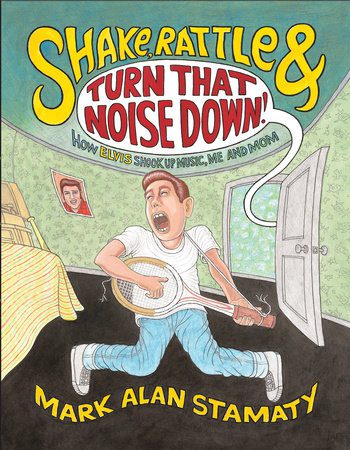
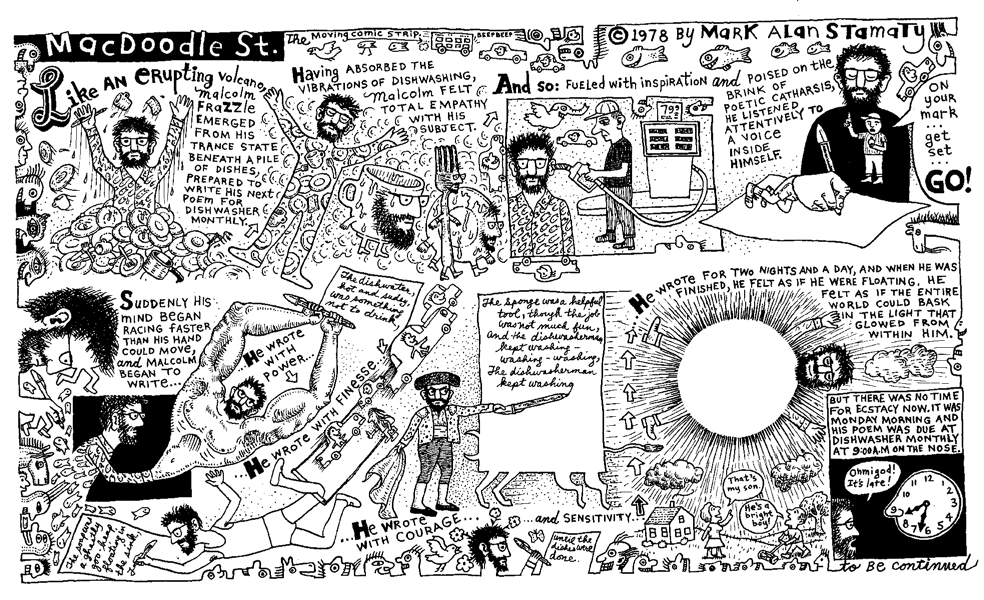
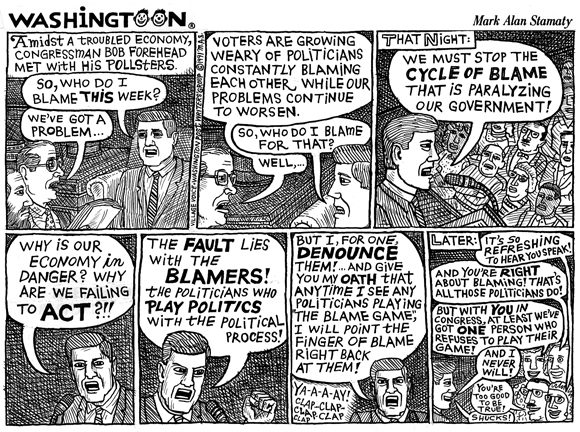
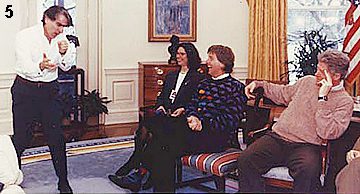
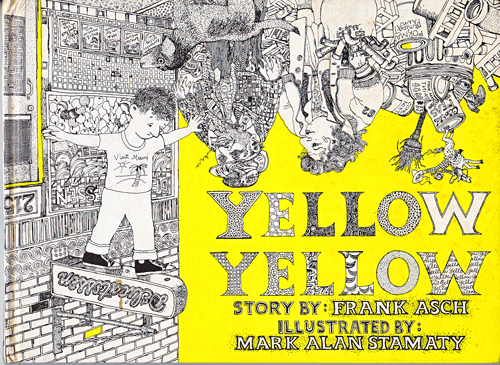
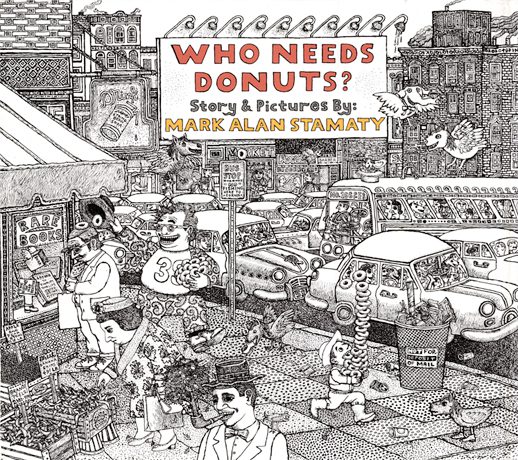
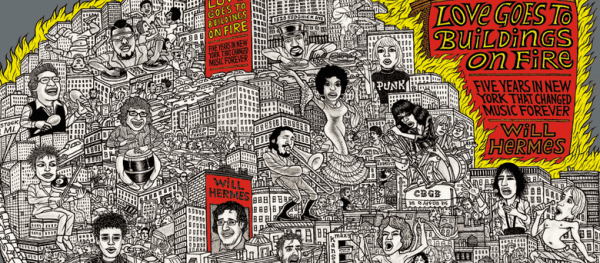


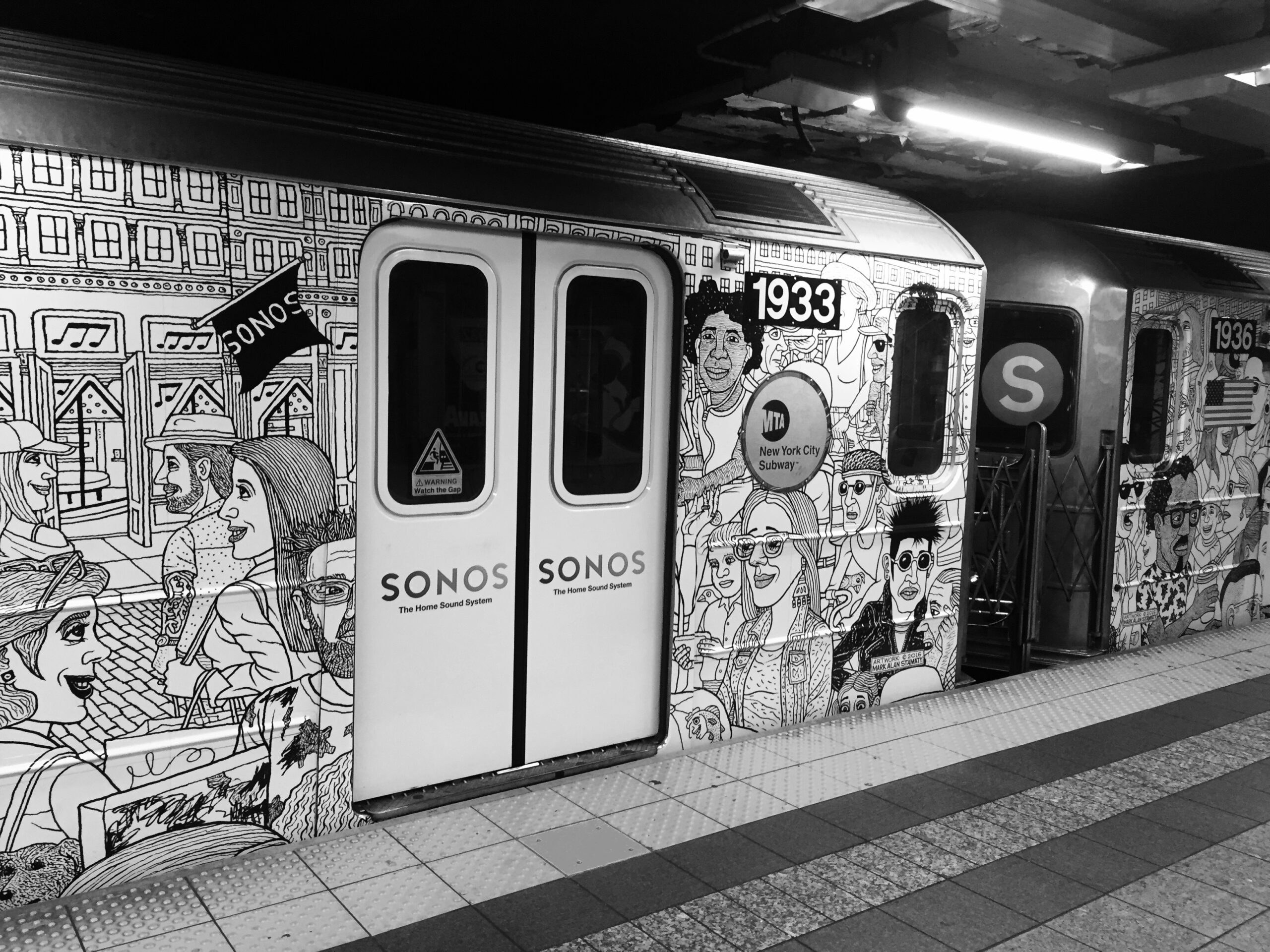
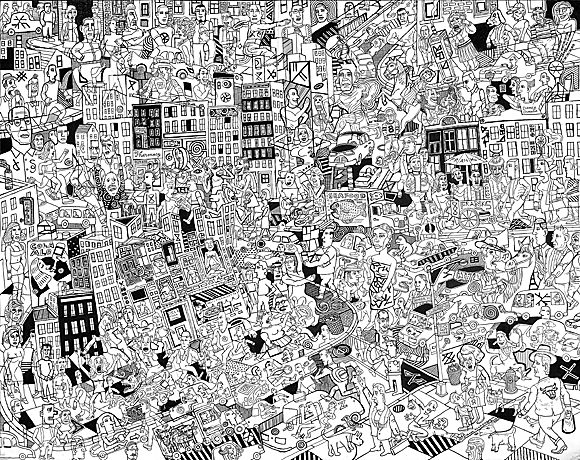
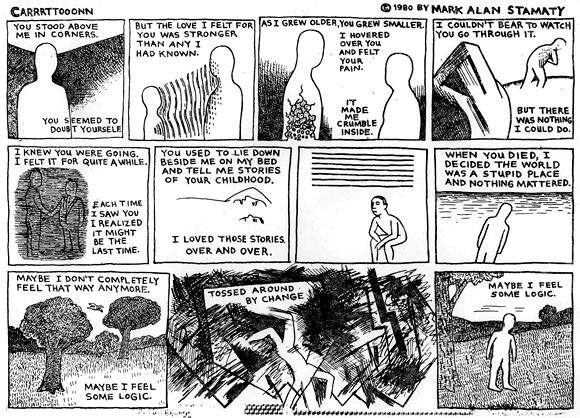
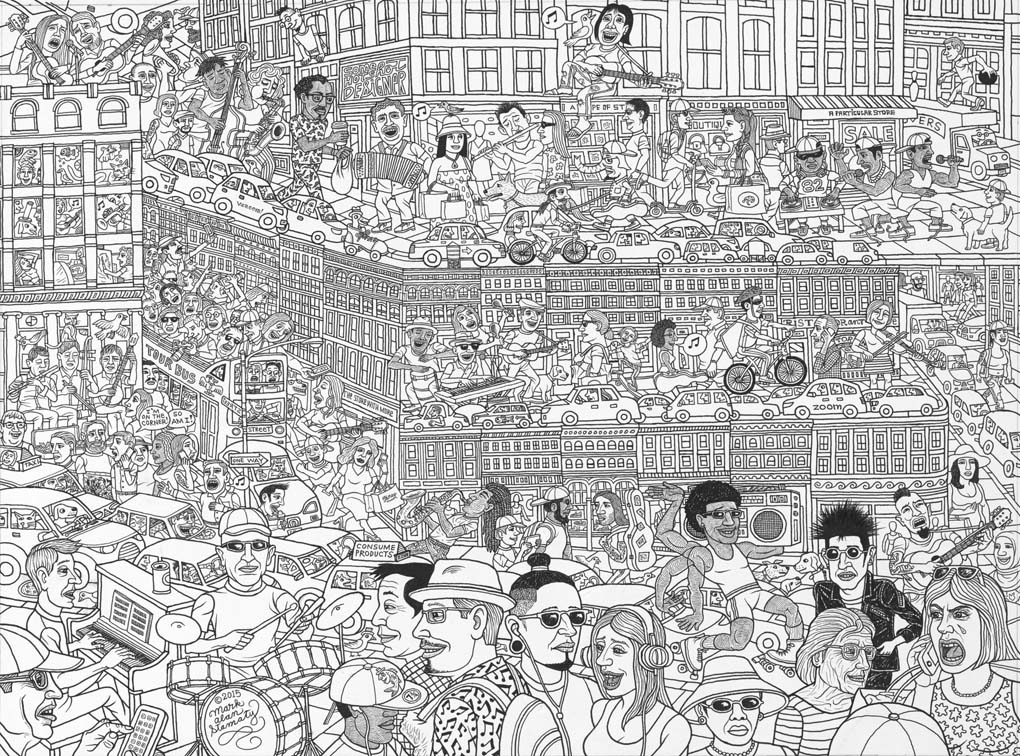




3 responses
Holy shit! N.Y.C. has Corporate Sponsored Graffiti…say it ain’t so!
And that Sonos store used to be a gallery where Richard Serra had his Tilted Arc pieces.
Loved Stamaty’s work in The Voice, but oh, how did he become a corporate pawn?
Harry-
The gentrification of SoHo is directly discussed within the piece, and I don’t think it’s fair to blame it on artists or to accuse an artist of being a “corporate prawn” simply because s/he has accepted a commission from a commercial entity. Would an artist be a “corporate pawn” if s/he accepted commissions from museums with corporate donors, or from private patrons whose wealth is tied to corporations? Who is buying art from galleries, and where does their money come from?
You single out Richard Serra as somehow being purer as an artist, but Serra’s work is now held in many public and private collections internationally– not in a space outside of time and economic reality. Also, perhaps you are thinking of 112 Greene Street? Sonos is at 101 Greene.
Point one – I remember Michael Stewart, a graffiti artist being strangled and killed by N.Y.C. cops. But now that some business pays the Transit System, it is alright to have subway graffiti. Hmm…
Point two – I lived through the gentrification of Soho and the East Village, but excuse me for not remembering the Exact address of said gallery.
Point three – I in no way inferred that Serra was any purer an artist than Stamaty, and I am aware of the intricacy of the N.Y.C. art world, having worked for Paula Cooper, Angela Westwater, Dia Foundation, and many established artists over the years.
Point four – I stand by the corporate pawn statement. You sign over your “product” to them, and it is theirs. It happens to lots of people.
Click here to subscribe today and leave your comment.